NFTs
Solo Artist Christian O’Connor Talks New Album and NFTs – New Noise Magazine
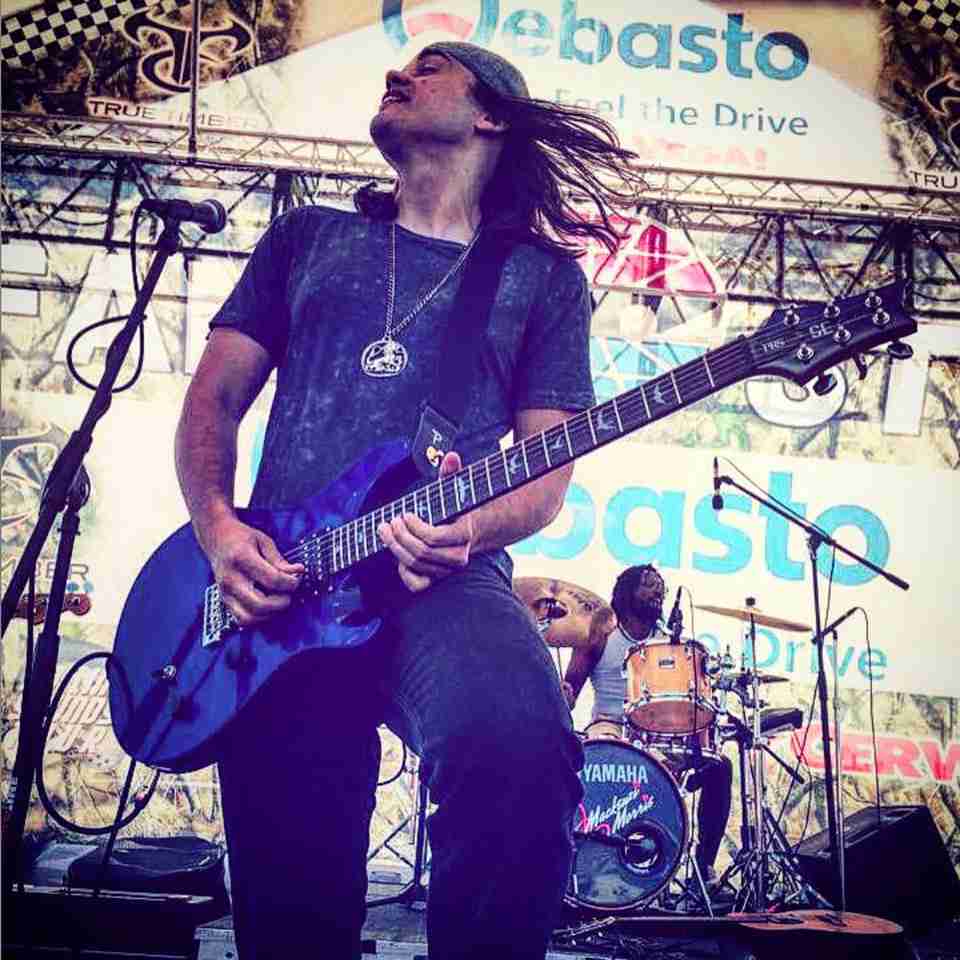
Solo artist Christian O’Connor is trying something different. His new album Laughing From the Other Side of Fear comes out later this year, and it’s a bluesy rock album with alt-rock and even hip-hop elements. The digital streaming version of the album is being released on New Year’s Day 2025, but, in the meantime, he’s rolling the album out slowly over the course of this year, putting out a new single every few weeks, and creating NFTs to coincide with each song off the album. It’s a unique release strategy that will see 10 different tracks from the album get their own release day. The addition of tying his songs into the controversial world of crypto makes for one of the most unique musical experiences you’ll find in a long time.
We took a moment to sit down with O’Connor to talk about his new album, NFTs, and his love of 3-D art.
So you’re rolling out your album Laughing From the Other Side of Fear over the course of this year. Can you tell me a little bit about this album?
So I’ve been doing music since I was a little baby, professionally for 10 years, meaning I’ve been playing with other artists and stuff like that, doing gigs for very long time. But this is my first big release. This is first real foray into touring as myself. I’ve been doing it for a while; I’ve been playing in cover bands forever. I’ve been playing in other people’s bands. I’ve been doing my own stuff in bars across the US, but this is really my first big Spotify release. So I’m very pumped about it.
Well, I did release three albums before this on Spotify that I later took down because (I) keep getting better. I’m a lot better than I was at those albums. In particular, my voice wasn’t very strong back then. I’ve gotten a lot better vocally; I was too whiny. I didn’t have the rasp that I have now. That was the main reason. But it’s not like a scandal that I’m trying to hide.
You’re releasing singles one by one over the course of the year. What made you want to roll it out slowly in this gradual process instead of a traditional promotional cycle?
The reason why I wanted to do that is I started making a lot of 3-D art around every individual song. I’ve been sitting on this material for a while, and, (for) every song, I initially intended on releasing a lot of 3-D projects along with them. So I just decided, because every single had its own artwork, and (I) had so much material around each individual (single) that I thought each one of them deserves to be a single. Every one of these things had so much other material surrounding it. I thought maybe they all deserved individual releases.
So you’ve been doing NFTs for each one. Is that correct?
Yes, I have. They’re not necessarily going to be released alongside of every single because one of the things with NFTs is you absolutely have to get them right because of the permanent nature of NFTs. What’s your familiarity with NFTs, if you don’t mind me asking?
Not great, I’ll be honest. It’s my understanding that it’s an image that can’t be replicated?
Yeah, that’s the gist of it. It’s kind of one of those cult industries, meaning that the people who like NFTs love NFTs and the people that don’t like NFTs hate NFTs. So it’s very conscious. It’s probably the most controversial form of art for a lot of reasons. One is a lot of people don’t like crypto and a lot of people really do like crypto. There are people out there who believe it to be a scam and there are people out there who believe it to be the revolution. So everything about is very controversial. But yes, an NFT is basically a piece of art.
The best way I’ve heard it described is on the Ethereum blockchain—you can do it on a bunch of blockchains, there are a lot of different types of NF Ts, but I’m just going to talk about Ethereum-based NFTs just for simplicity sake—it’s a piece of digital artwork that the receipt is stored on the Ethereum blockchain. So (it’s) like a deed to a piece of art or something like that, like a certificate of authenticity. It’s a picture or a video or a 3-D file that is certified by a something called a smart contract. Think of it as the receipts on Ethereum. It is certified one of a kind. You can copy the art, but you can’t copy the deed to the art. I’ve heard people compare it with real estate. You could clone my house, you could make an exact replica of my house, but you couldn’t put it on this ground where my house is because there’s only so much real estate. You can take a picture of the Mona Lisa, but there’s only one Mona Lisa.
This makes me think of an autograph with a certificate of authenticity. You can retrace an autograph, but you can’t replicate the authenticity.
Yeah, you got it. That’s exactly what it is. Again, there’s a lot of there’s a lot of math underpinning that, but it’s kind of like your car: you don’t have to understand how your car works, you just have to understand how to buy it and how to drive it. But when it comes to my NFTs, my plan right now is to make an NFT for every one of my songs. I have NFTs right now for every one of my songs but I want to make sure that they’re perfect because, like I said, once you release it, they have a very permanent nature. So I want to make sure there’s no bugs in the code and there’s nothing that could render them useless in the future because you only have one shot at these releases.
Why did you want to tie your album into crypto and NFTs?
Just to retrace it, I’ve been working with music as my living for 10-15 years now. Before that, my day job was that I was a coder. One of my first music gigs was I was the guitar player for Jennifer Paige. She sings that song “Crush.” So I played with her, and I basically just had an RV with the rest of the band and we would travel around. At that point, working remote had just come out, like 2009-2010, something like that. So I got a job doing code. On the road, I had a laptop I would go to coffee shops and do that. So in the coding community. crypto became very, very popular; you heard about it a lot.
I got into crypto at a very young age and ideologically just fell in love with it. I just (said) there are the people that hate it, there are the people that love it. I would be in the “love it” (camp). I think it’s the revolution. It’s the new underpinning of money in society. So I tried to incorporate crypto into every single thing I do. And I believe that NFTs are probably going to be the new standard for art. I think that it’s going to be a way to monetize your interest in a band.
Like, I was very into Coheed and Cambria with their first album, The Second Stage Turbine Blade. I was obsessed with it; I loved it. They blew up, but you don’t get anything for that. I caught on early but who cares? I think I used the wrong word when I said “monetize.” I don’t think that was the right term because it’s not supposed to be about reselling it because that kind of cheapens it. It’s a way to almost pledge allegiance or like prove your loyalty to bands. Because, if NFTs had been around, and if Second Stage Turbine Blade had been an NFT, I would have bought it. I would be like, I was obsessed with this movement, and I can prove it.
You can prove that you were there before. You can get hipster cred for it.
Exactly! Yeah, I like that. That’s actually a good way to put it, whether somebody would like being called hipster or not. But you’re right. It means I was here at the time. So I didn’t mean to say “monetize.” I don’t think selling NFTs is a good thing. So I would actually say I’m against the idea of monetizing it because, whenever you get into the business of selling stuff, it cheapens it a little bit. But it’s a way to prove you were there. It’s digital graffiti in its most pure sense.
You’ve also been making your own artwork for the singles. Is that separate from the NFTs?
As of right now, yes, it is. I’m also an addict of 3-D art, like Blender. I don’t know if you’re familiar, Blender is an open-source program that it’s very popular for 3-D art. There’s cinema 4-D, there’s Houdini, there’s 3ds Max. There’s a lot of those softwares, but Blender is probably the only real mainstream open-source software for 3-D art. For every song, I made a lot of 3-D sculptures for them. I just started with a blank canvas in Blender and I just thought “If this (song) was to be a visual thing, what would it look like?”
“We’re Stealing the Crown” was probably the first one that I made Blender art for. I made a machine. You’ll see in the artwork, it looks like some kind of a nuclear reactor or something like that. That was the first one where it was a machine with no purpose. So I thought what would look cool. Glowing rings look cool. Some people don’t like that because they say that’s lazy, but I think it’s actually cooler to build a machine with no purpose, like a Rube Goldberg. It serves no purpose other than to be aesthetically pleasing, which is cool. I probably should have made it a crown, the more that I think about it, because that would fit the song a lot more. But maybe it’s cooler the way it is. But that is not the NFT for the song; my NFTs are separate. But yes, the NFTs will be 3-D artwork.
And speaking of “We’re Stealing the Crown,” that was the first single you’ve put out from the album. What made you want to lead with that one?
“We’re Stealing the Crown” is one that I’ve played live before and it’s one of the most exciting ones to play. I’ve been very itchy to get out there and to play that when I’ve been doing shows. I’ve been playing a lot of concerts for about a decade and just debuting my original material across a lot of bars, and “We’re Stealing the Crown” gets the best reaction out of people. I can sometimes get the audience to sing along. I try to teach them to say “We’re stealing the crown,” but it comes in at a weird interval so it’s very hard. Next time I write a song that has to be a sing-along I’m going to make it exactly on beat.
But it gets a great live reaction. It embodies a lot of what my journey as an artist has been about. It’s about you weren’t supposed to make it, but you do. That phrase itself is (about) maybe you weren’t meant to, to have a career, maybe it didn’t work out, maybe you got too old, but you’re doing it anyway. That was the premise; that was the philosophy for the song.
I’m always fascinated with why artists choose particular album titles and this one, Laughing From the Other Side of Fear, what made you want to pick that as the title?
That’s the pre-hook line in stealing the crown. This album, I wrote it on the heel of a pretty serious major depressive episode. I had just gotten on Zoloft and I was recovering from that. Laughing From the Other Side of Fear is a sentiment that I was telling myself that that I’ll get through this. It’s just a beautiful sentiment of, as painful is anything we feel is, there’s going to be another side of it.
And even though that underlying sentiment is serious, it’s also not really meant to be taken seriously because, in a way, I took a serious sentiment and made it silly because it’s an upbeat rock song. It’s not as emotional. So, it’s about pushing through something that may be temporary with the anticipation of better days. But on the other hand, we’re a rock band; don’t take it too much to heart.
So you’ve got the whole rollout plan for the rest of the year. You’ve got singles coming out every month up through the first of next year. What were you most excited about with this whole release and this whole rollout?
Getting out live. That’s my favorite part of it. I write everything with the idea that I want to see what it’s like in a bar. When I make an album, that’s like packing (my) bags for a trip. It’s funny to think of it that way because your album is your art, but I love playing live. It’s tough traveling, especially when you’re in your car, but it’s so much fun. Just getting into the bar with arms full of gear and playing for like four hours in front of a bunch of drunk people. It’s my favorite thing in the world. So my favorite thing about this, by far, will be playing and seeing what people think when they see it live, just seeing what the reaction is to this material and seeing also how me and the band can reimagine it.
There’s two phases with you write the album, and you almost have to relearn it because, when I’m making this, I’m stacking guitars and this took me a very long time to actually get all this out recorded after I wrote everything. So right now, I’m with the band relearning how I’m going to do this with three pieces. It’s a three-piece band: me, a bass player, and a drummer. So I’d say that’s my favorite part of this. It’ll be coming to your town and playing and seeing what you guys think of it.
So do you have any live shows lined up? I know you’ve got you’ve got the release schedule pretty tight.
As of right now? No. I’m still in the relearning phase with my band. It’s going to be tough because, like you said, my release schedule is pretty aggressive. I don’t have any yet, but I will keep you posted when we get it. I’m just trying to think of what cool stuff I can put into the show before I get out there. It’s always a fun thing before I get out live. It’s like, What kind of stuff can I pack into my live act that a club will let me bring in there. Can we do pyro? Of course not. It’s more like I just look at my van for a long time and I’m like, What can I fit in there? So that’s what phase I’m at right now.
I will have another song out; I think it’s every five weeks, at this point, I’ll be releasing a new thing. And I’m very active on social media, particularly TikTok and Instagram. I do Twitter; I do Facebook; I do pretty much everything. I think TikTok and Instagram are the most active ones (for me). So I’m going to keep everybody very posted about everything I’m doing. Even boring stuff, because of social media. I think it’s more personal when you can see everything I do. I’m not a very manicured posts kind of guy, because that’s not what it’s for. Documentaries are for that. Social media is like a Polaroid. You take it you throw it at the audience and they like it or they don’t like it.
First thought, best thought.
Exactly. Even if you regret it a little bit later. Don’t do anything too crazy. Some people say, Oh I regret that. But I’m like, Well, you are not using it right.
Follow Christian O’Connor on Facebook, Instagram, Twitter, and TikTok for future updates.
NFTs
RTFKT Announces Project Animus Reveal, Launches Egg Unboxing Event Amid Mixed Reactions | NFT CULTURE | NFT News | Web3 Culture
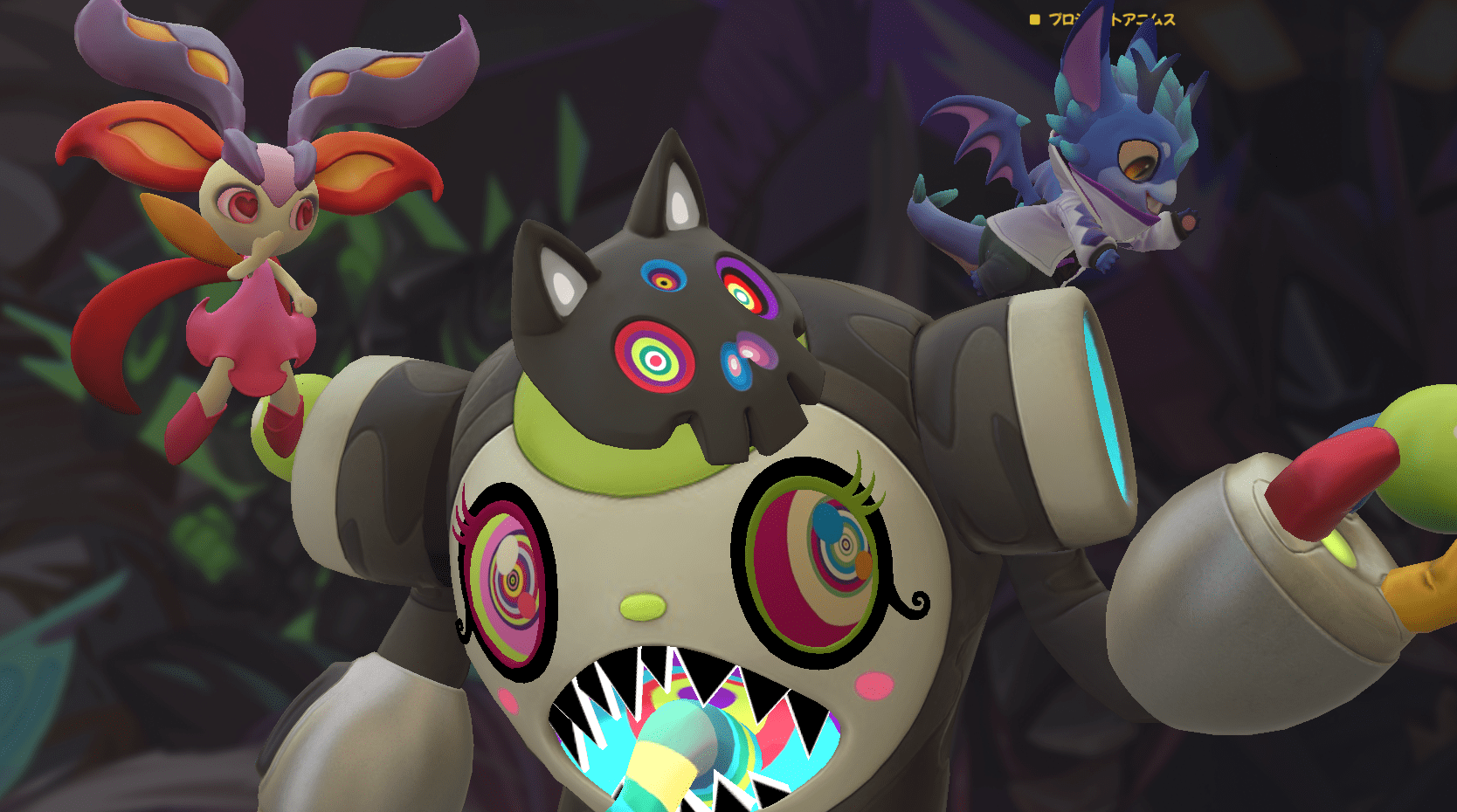
RTFKT, the innovative creator-led company renowned for its cutting-edge sneakers and metaverse collectibles, has officially unveiled its highly anticipated collection, Project Animus. This project marks a significant milestone in RTFKT’s journey, introducing a new dimension to its digital universe after a long period of development. However, the initial market response has been disappointing, with the revealed Animi trading at a floor price of 0.05 ETH, significantly lower than the eggs’ floor price of 0.09 ETH.
The Genesis of the Project Animus
Initially introduced in October 2022, Project Animus introduces a unique ecosystem of digital creatures called Animi. These Animi are designed to enhance Clone X’s avatars, offering an immersive and engaging experience for the community. The recent reveal showcased a diverse range of Animi species, each with distinct design traits and elemental attributes, breaking away from traditional trait-based rarity systems.
A New Digital Frontier: The History and Evolution of Project Animus
The Animus Project is RTFKT’s latest intellectual property, promising to revolutionize the NFT space with its unique digital creatures. The journey kicked off on October 8, 2022, with an interactive teaser event called “The Eggsperience.” This livestream event allowed attendees to explore a virtual Animus Research Facility, generating intrigue and excitement among the community.
Renowned artist Takashi Murakami played a significant role in the project, revealing the first Murakami-themed Animus creature, Saisei, on April 30, 2023. This collaboration added a layer of artistic prestige to the project, further elevating its status within the NFT community.
Animus Egg Incubation: A Journey from Egg to Animi
Clone X NFT holders had the opportunity to claim an Animus Egg until March 1, 2024. This was followed by the Animus Egg Hatching event, which ran from May 7 to June 4, 2024. During this period, holders of several RTFKT NFTs, including Clone X, Space Pod, Loot Pod, Exo Pod, and Lux Pod, were able to use a points-based system to increase their chances of hatching rarer Animi. The limited supply of Project Animus Eggs is capped at 20,000, with no public sale planned.
Mixed market reception
Despite the excitement and innovative features, the market reaction to the reveal of Project Animus has been lukewarm. Animi is currently trading at a floor price of 0.05 ETH, significantly lower than the eggs’ floor price of 0.09 ETH. This discrepancy has led to disappointment among some collectors who had high expectations for the project.
What Awaits Us: The Future of Project Animus
Following the reveal, RTFKT plans to release a collection of exclusive Animus Artist Edition characters. Holders of Clone X Artist Edition NFTs are guaranteed to get one of these special editions. The distribution will include 88 Special Edition Animus, with 8 Mythic (Dragon Sakura), 40 Shiny, and 40 Ghost Animus. The odds of receiving a Special Edition Animus are the same for all Eggs hatched, regardless of the points accumulated.
The remaining Animus characters will be distributed among unhatched Eggs, encompassing Special Edition Animus, as well as Cosmic Animus and Murakami Element from Generation 1, Generation 2, and Generation 3.
Conclusion
RTFKT’s Project Animus represents a bold step forward in the NFT space, combining cutting-edge technology with artistic collaboration to create an immersive and innovative digital ecosystem. However, the initial market reception highlights the challenges of living up to high expectations in the ever-evolving NFT landscape. As the project continues to evolve, it promises to deliver unique experiences and opportunities for its community, solidifying RTFKT’s position as a leader in the metaverse and digital collectibles arena.
Summary: RTFKT has unveiled Project Animus, introducing a unique ecosystem of digital creatures called Animi designed to enhance Clone X avatars. Despite the excitement, market response has been mixed, with Animi trading at a lower floor price than eggs. The project kicked off with an interactive event in October 2022, featuring collaborations with artist Takashi Murakami. Following the reveal, RTFKT will release special edition Animus characters. The total supply of Animus Eggs is limited to 20,000, with no public sale planned.
NFTs
The Olympics have reportedly ditched Mario and Sonic games in favor of mobile and NFTs
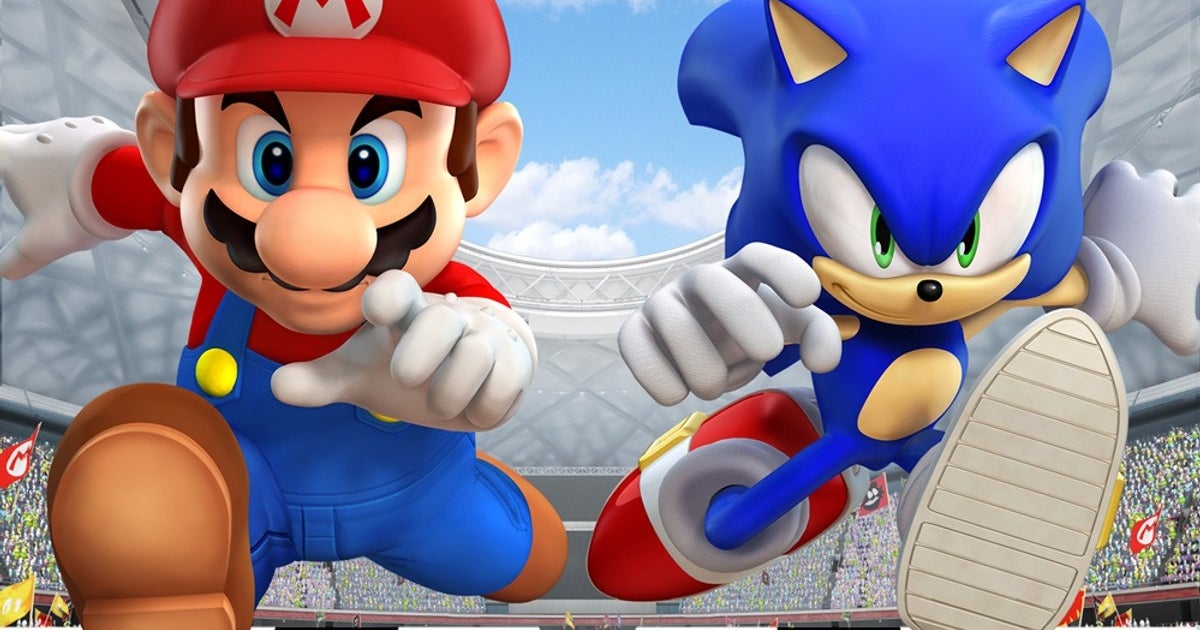
The long and historic partnership between Nintendo and Sega to create video games for the Olympics reportedly ended in 2020 as event organizers sought opportunities elsewhere.
Lee Cocker, who served as executive producer on several Mario & Sonic Olympics titles, said Eurogamer the International Olympic Committee let the licensing agreement lapse because it “wanted to look at other partners, NFTs and esports.”
“Basically, the IOC wanted to bring [it] “Turn inward and look for other partners so you can get more money,” Cocker added.
The 2024 Summer Olympics kicked off in Paris last week, but there were no Mario & Sonic games available in time for the event to begin – the first time this has happened since the original release in 2007 to coincide with the 2008 Beijing Summer Olympics.
Over the past two decades, there have been four Mario and Sonic adaptations for the Summer Olympics, as well as two for the Winter Olympics.
This year, instead of a Nintendo/Sega title, the IOC released Olympics Go! Paris 2024, a free-to-play mobile and PC title developed by nWay, which has worked on several Power Rangers games.
Olympics Go! allows players to compete in 12 sports and unlock NFTs from the Paris 2024 digital pin collection.
The original Mario & Sonic at the Olympic Games was announced in March 2007 and marked the first time the two mascots – once archrivals in the console wars of the 1990s – appeared together in a game.
NFTs
DraftKings abruptly shuts down NFT operation, leaving collectors panicking over vast holdings of digital tokens
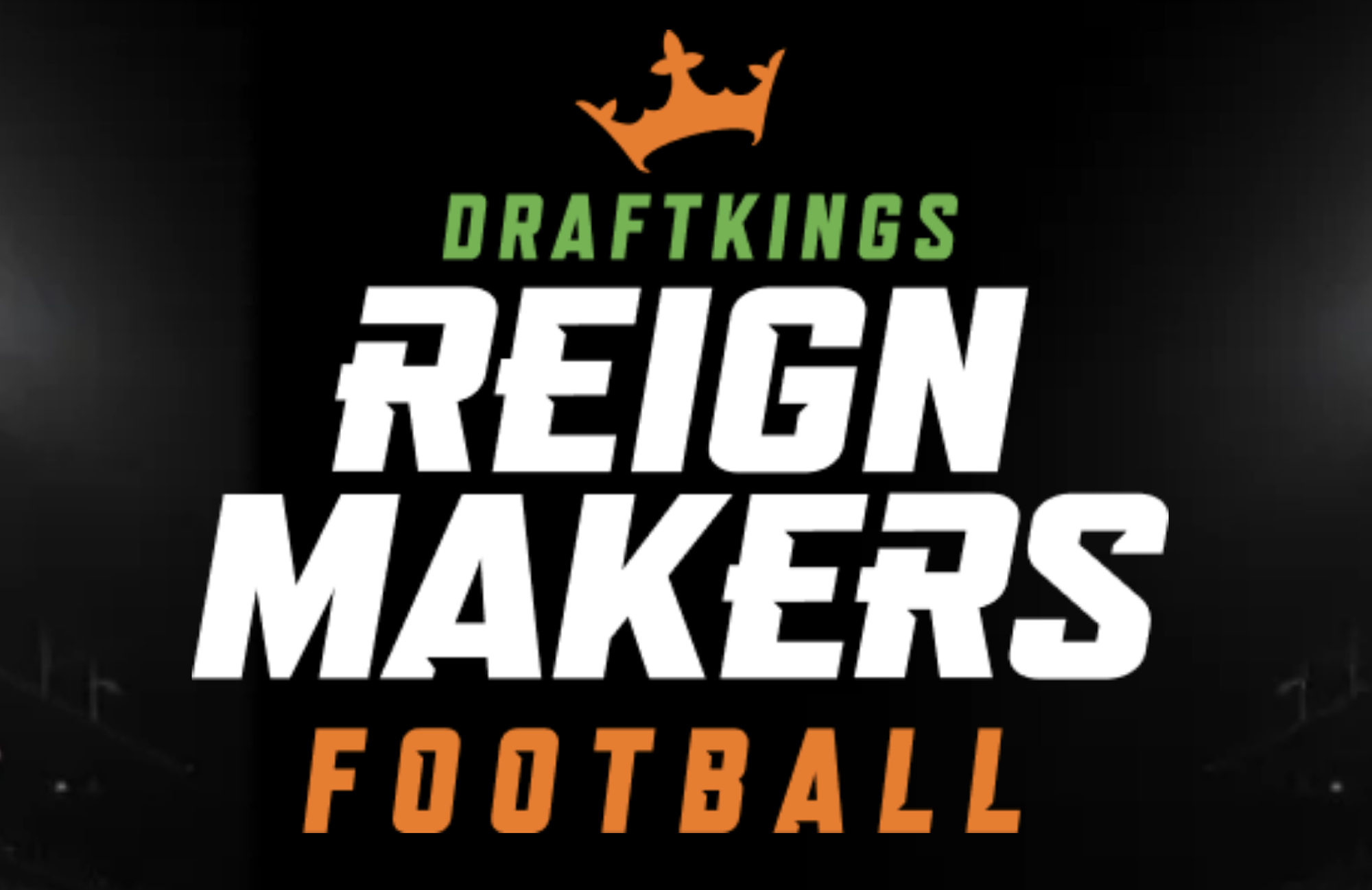
DraftKings, the daily fantasy sports and sports betting company, abruptly shut down a program called Reignmakers on Tuesday, posting a notice on its website and associated app and sending a mass email to some subset of its user base. Reignmakers, which the company launched in 2021, offered pay-to-play competitions in NFL football, PGA Tour golf and UFC mixed martial arts. The decision to eliminate the entire program, DraftKings says, was not made lightly but was forced “due to recent legal developments.”
DraftKings has yet to specify what “recent legal developments” are troubling its now-dead Reignmakers product. The company was sued in U.S. District Court in 2023 by a Reignmakers player named Justin Dufoe, who accuses the company of dealing in unregistered securities, taking advantage of relatively unsophisticated “retail investors,” and failing to market and support Reignmakers to the degree necessary to return to its users the financial benefits expected. DraftKings filed a motion in September to dismiss Dufoe’s complaint, but that motion was denied on July 2. A scheduling conference was held by the parties on July 29; Reignmakers was permanently shut down on July 30. A DraftKings spokesperson reached by Defector on Wednesday declined to confirm whether Dufoe’s complaint is the “recent legal development” that forced the company’s hand.
Users of the Reignmakers NFL product, who in recent days began murmuring on social channels about a notable lack of DraftKings activity so close to the start of the NFL preseason schedule, were caught off guard and, in some cases, devastated by the news. Members of the DraftKings Discord server, where all Reignmakers-related channels were abruptly shut down and locked following the announcement, flooded a general channel in various states of panic, sharing news, theorizing, lamenting, and, in some cases, openly worrying about whether it would be possible to recoup any decent fraction of the genuinely impressive sums of money they had invested in this DraftKings product.
Reignmakers is nominally a daily fantasy contest—users build lineups of players and then pit those lineups against other users’ lineups for cash prizes—but it’s actually a distributor of nonfungible digital tokens (NFTs), originated and sold by DraftKings, and then frequently resold on a dedicated secondary marketplace also hosted by DraftKings. At the lineup-building level, Reignmakers functions like a card-collecting game, with artificial scarcity driving the prices of the most coveted cards to insane, eye-popping heights. Reignmakers NFTs are tiered and offered in timed drops designed to heighten the sense of scarcity. A user can enter a lower-tier contest using a collection of NFTs that may have cost a few hundred dollars in total (or that were earned by purchasing random packs of NFTs that offer generally low odds of scoring top assets) and throw their lot in with hundreds of casual users competing for relatively unimpressive rewards. Random packs at the lowest tier would have prices as low as a few dollars; mid-tier cards—Star and Elite tiers, I’d guess—could cost a player upwards of $1,000.
But players interested in hunting down the biggest payouts, not just from games but from leaderboard prizes and other assorted prizes, would need to enter higher-tier games, and to enter the higher-tier games, a user’s collection needed to include higher-tier NFTs. DraftKings ensured that these cards were extremely scarce and could only be purchased directly on the marketplace at prices that any reasonable person would consider utterly insane.
For example, the highest-tier Reignmaker contests (called the Reignmakers tier, of course) have in the past been limited to listings with at least two of the highest-tier, rarest NFTs (also the Reignmaker tier) plus three NFTs from the second-highest tier (Legendary). NFTs at these tiers are expensive. Not just expensive in the way that, like, a steak dinner is expensive, but expensive in the way that buying even one of them should trigger a mandatory visit to a gambling addiction counselor, if not sirens and a straitjacket. Back in 2022a Reignmaker-level Ja’Marr Chase NFT from something called the Field Pass Promo Set could be purchased directly from the DraftKings Reignmaker Marketplace for a whopping $32,100.
Reignmakers users purchased NFTs at various levels with the expectation that owning them would convey better odds of winning contests hosted on DraftKings. This was the gamification element of Reignmakers, which emerged several months after DraftKings began trading and minting its NFTs. But as with all NFTs, a very large part of the real appeal for its buyers was the expectation, however insane, that these worthless, virtually worthless, infinitely duplicable digital images would increase in value over time. Now that both the Reignmakers game and the Reignmakers marketplace have been shut down, Reignmakers NFT holders are worried that their investments may have suddenly lost all monetary value. One Discord user described Tuesday as “a bad day to wake up and realize you have $2,000 worth of unopened NFL Rookie Packs”; Another user asked the group if they should expect “a refund” on the $10,000 they’ve already spent on Reignmakers NFTs this year. A pessimistic Reddit user posted tuesday that they would sue DraftKings if they were forced to take a total loss on a Reignmakers NFT collection worth approximately $100,000.
The game (scam?) was built to make numbers like these not only possible, but somewhat easily achievable. A user who intended to compete from a position of strength in multiple overlapping high-profile contests at the same time, and who had been in the blockchain madhouse for a period of years, could easily have spent six figures on Reignmakers NFTs. DraftKings used non-gaming incentives to entice players to spend more and more money, much like casinos give away free suites to players who over-bet on blackjack. Another Reddit user lamented the loss of the additional prizes and ranking bonuses he had hoped to earn in the upcoming NFL season by having a portfolio of NFTs that had reached the highest levels of value and prestige. “I was already loaded up on 2024 creation tokens and rookie debut cards,” said this Reignmakers userwho claimed his portfolio was finally “close to the top 250 overall.”
Dufoe’s complaint says the NFTs minted by DraftKings for Reignmakers qualify as securities, function like securities, and should be regulated as securities. In its motion to dismiss, DraftKings attempted to position its NFTs as game pieces — eye-wateringly expensive, yes, but essentially the same thing as Magic: The Gathering cards or Monopoly hotels. The court, in resolving these arguments, applied what’s known as “the Howey test,” referencing a case from 1946 in which the U.S. Supreme Court established a standard for determining whether a specific instrument qualifies as an investment contract. Judge Dennis J. Casper, in ruling against DraftKings’ motion, concluded that Dufoe could plausibly argue that Reignmakers’ NFT transactions represent “the pooling of assets from multiple investors in such a manner that all share in the profits and risks of the enterprise,” arguing that DraftKings’ absolute control over the game and marketplace effectively binds the financial interests of the company and the buyers, the latter of whom depend on the viability of both for their NFTs to retain any value.
Reignmakers users are different from Monopoly players in at least one crucial way: A person who buys a Monopoly board has no expectation from Hasbro that those little red and green pieces will appreciate in value. It’s a game! No matter what any hysterically conflicted party may say to the contrary, that’s not what NFT collecting is. DraftKings had been selling Reignmakers NFTs for months before they were gamified, and Dufoe, in his complaint, cites public comments made by DraftKings spokespeople that seem to explicitly position Reignmakers NFTs as assets with independent monetary value beyond their utility in Reignmakers contests. Judge Casper, in his ruling on the motion to dismiss, cites a Twitter account associated with a podcast run by DraftKings CEO Matthew Kalish, who in a tweet described NFTs as “the opportunity to invest in startups, artists, operations, and entrepreneurs all at once.” This is probably the kind of thing that NFT peddlers should stop saying. This advice assumes, of course, that NFTs will continue to exist as instruments on the other side of this and other lawsuits.
DraftKings has posted a worryingly sparse FAQ at the bottom of the your ad Tuesday, anticipating but largely failing to address questions from players who see this as yet another in a long line of brutal blockchain rug pulls. In a hilarious reversal of existing Reignmakers policy, Reignmakers users are now allowed by DraftKings to withdraw their Reignmakers NFTs from their DraftKings portfolios and into their personal NFT wallets, where those NFTs will have precisely zero value, to anyone, for the rest of all time. There’s also vague language about Reignmakers users having the option to “relinquish” their NFTs back to DraftKings in exchange for “cash payments,” subject to “certain conditions” and according to an as-yet-unspecified formula that will take into account, among other things, the “size and quality” of a player’s collection.
Reignmakers users are not optimistic. Those who claim to have been victims of other blockchain market crashes are warning their peers on Discord and Reddit to expect payouts that amount to pennies on the dollar; in the absence of any clarifying information, users are unsure whether cashing out their NFTs from Reignmakers to their personal NFT wallets, for reasons that completely pass any and all understanding, would effectively preclude the possibility of delivering these silly digital tokens back to DraftKings. It remains to be seen what exactly DraftKings has in mind with the “certain conditions” attached to the delivery process. There is much that has yet to be resolved. A DraftKings spokesperson contacted by Defector indicated that more time would be needed to answer a list of specific questions and issued a statement noting that it is “in DraftKings’ DNA to innovate and disrupt to provide the best possible gaming experiences for our customers.” The original complaint is embedded below.
Do you know anything about the demise of Reignmakers, either from the consumer side or from the DraftKings side? We’d love to hear from you. Get it in touch!
Recommended
NFTs
There Will Be No More ‘Mario & Sonic’ Olympics Because of NFTs
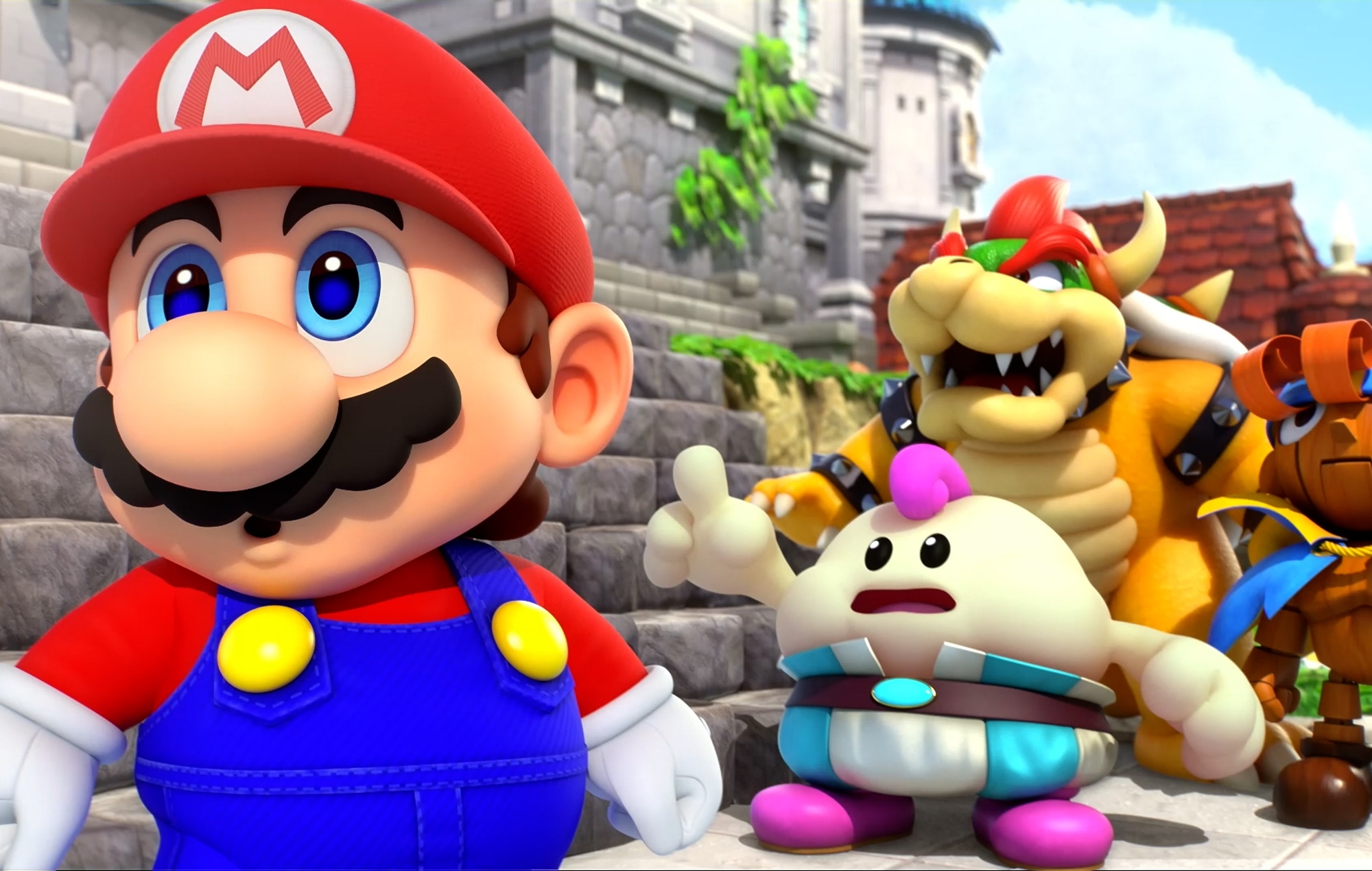
Nintendo and SEGA have been teaming up with the Olympics for several years now in the popular Mario & sonic in the Olympic Games series, but a new report claims the International Olympic Committee has abandoned the series in favor of new deals in eSports and NFTs.
According to Eurogamer“A veteran behind the series,” Lee Cocker, told the outlet that the IOC chose not to renew its license with SEGA and Nintendo, letting it expire in 2020. “They wanted to look at other partners and NFTs and eSports,” Cocker told Eurogamer. “Basically, the IOC wanted to bring [it] turn inward and look for other partners so they could get more money.”
Mario & Sonic at the Olympic Games is a series that has been running since 2008, with six main games covering the regular and Winter Olympics. In the games, players could control various characters from the Mario and Sonic franchises and compete in Olympic sporting events.
It’s no secret that NFTs are a big part of this year’s Paris 2024 Olympics. Olympics Go! Paris 2024 is a mobile and mobile-connected game your site states that players can “join the excitement of the Paris 2024 Olympic Games with nWay’s officially licensed, commemorative NFT Digital Pins collection honoring Paris 2024!”
As for eSports, Saudi Arabia will host the ESports Olympic Games in 2025. This is part of a partnership with the Saudi National Olympic Committee (NOC) that is expected to last for the next 12 years and is expected to feature regular events.
IOC President Thomas Bach said: “By partnering with the Saudi NOC, we also ensure that Olympic values are respected, in particular with regard to the game titles on the programme, the promotion of gender equality and the engagement with young audiences who are embracing esports.”
In other news, Someone claimed they’re suing Bandai Namco because Elden Ring is too difficult.
-
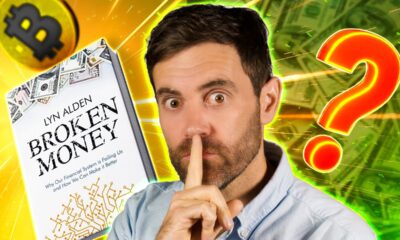
 Videos7 months ago
Videos7 months agoMoney is broke!! The truth about our financial system!
-

 News6 months ago
News6 months agoMore Crypto AI Alliances Emerge Following $7.5 Billion Token Merger — TradingView News
-

 News6 months ago
News6 months agoOver 1 million new tokens launched since April
-
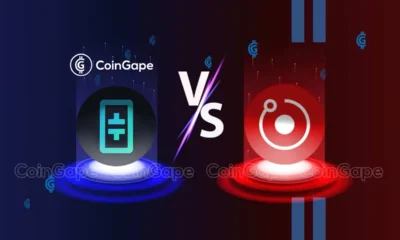
 Altcoins6 months ago
Altcoins6 months agoRender vs. Theta; Which DePIN Altcoin to buy in May
-
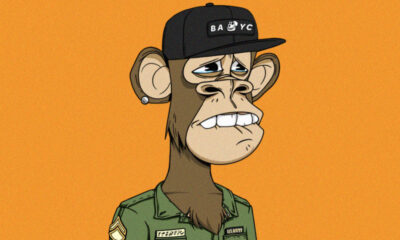
 NFTs7 months ago
NFTs7 months agoSurprisingly, Bored Apes is now laying off employees as the NFT market disintegrates
-

 Videos6 months ago
Videos6 months agoFantom: Potential FTM Price and BIG Updates – The Latest!!
-
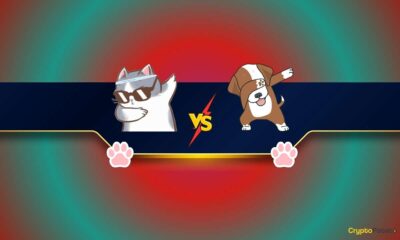
 Memecoins6 months ago
Memecoins6 months agoChatGPT Analytics That Will Work Better in 2024
-
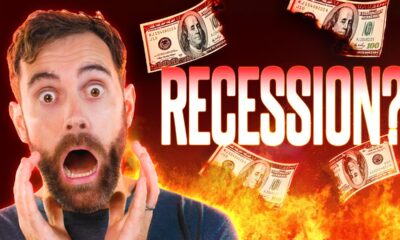
 Videos6 months ago
Videos6 months agoRecession soon?? What this means for you and your wallet!!
-
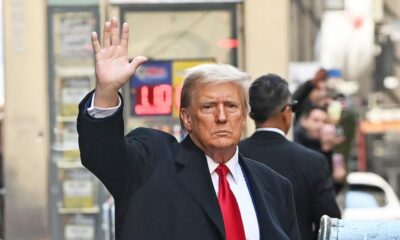
 NFTs7 months ago
NFTs7 months agoTrump endorses Bible line – after selling shoes, NFTs and more
-
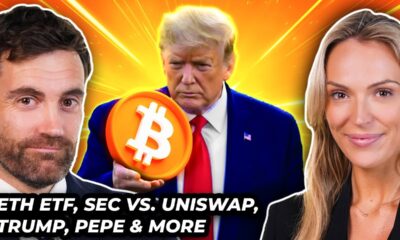
 Videos6 months ago
Videos6 months agoCrypto News: ETH ETFs, Pro-Crypto Politics, UNI, DOGE & MORE!
-

 Altcoins6 months ago
Altcoins6 months agoAltcoin Investments to create millionaires in 2024
-
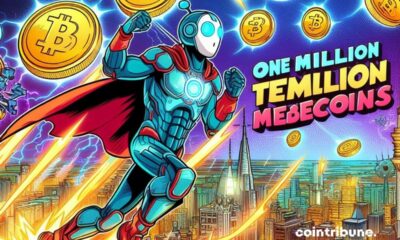
 Memecoins6 months ago
Memecoins6 months agoWhen memecoins reign supreme in the ecosystem!





